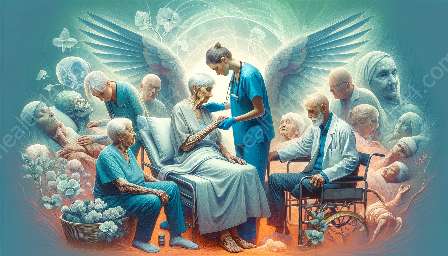As our population ages, the need for innovative approaches to elder care becomes increasingly important. One such approach is the integration of technology in elder care, which has the potential to revolutionize how care is delivered to the elderly. This topic cluster explores the impact of integrating technology in elder care, its compatibility with geriatric nursing and geriatrics, and the benefits and challenges associated with this integration.
Advances in Technology and Elder Care
The rapid advancements in technology have opened up new possibilities for improving the quality of care for the elderly. From wearable devices that monitor vital signs to telemedicine platforms that enable remote consultations, technology has the potential to provide greater accessibility, efficiency, and effectiveness in elder care.
Impact on Geriatric Nursing
Geriatric nursing, as a specialized field of nursing, plays a crucial role in the care of older adults. The integration of technology in elder care has the potential to enhance the practice of geriatric nursing by providing tools and resources to improve assessment, monitoring, and coordination of care. Technology can also support educational initiatives for geriatric nurses, enabling them to stay abreast of the latest developments in the field.
Advantages for Geriatrics
For the field of geriatrics, the integration of technology offers numerous advantages. Electronic health records can streamline access to patient data, improving continuity of care and facilitating communication among healthcare providers. Additionally, technology-enabled devices and services can empower older adults to actively participate in their own care and maintain independence, ultimately improving their overall quality of life.
Benefits of Technology Integration in Elder Care
The integration of technology in elder care offers several benefits, including:
- Enhanced patient safety and monitoring through wearable devices and remote sensors.
- Improved access to healthcare through telemedicine and virtual consultations.
- Increased efficiency in care delivery and coordination through electronic health records and communication platforms.
- Support for aging in place by enabling remote monitoring and assistance.
- Enhanced social connectivity through technology-enabled communication and social engagement platforms.
Challenges of Using Technology in Elder Care
While the integration of technology in elder care holds great promise, it also presents certain challenges, such as:
- Complexity in adopting and integrating new technologies into existing care systems.
- Concerns about data security and privacy, particularly regarding the use of personal health information.
- Potential disparities in access to technology among older adults due to factors such as socioeconomic status and digital literacy.
- The need for ongoing training and support for healthcare professionals and older adults to effectively utilize technology in care delivery.
Conclusion
The integration of technology in elder care represents a significant opportunity to improve the well-being and quality of life for the elderly, while also enhancing the practice of geriatric nursing and advancing the field of geriatrics. By addressing the benefits and challenges associated with this integration, healthcare providers, policymakers, and technology innovators can work collaboratively to maximize the positive impact of technology on elder care.


